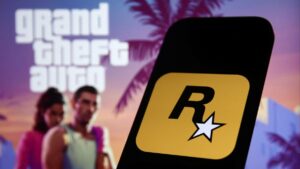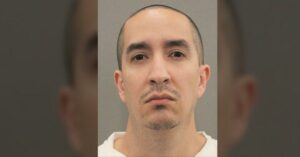“Unlocking the Future: How a Simple Discovery Revolutionized Technology and Changed Our Lives Forever”
One group of exiles known as the “traitorous eight” went on to found Fairchild Semiconductor, which in 1959 developed the world’s first practical integrated circuit or microchip. Two of the eight, Bob Noyce and Gordon Moore, later founded the Intel Corporation, today one of the world’s largest manufacturers of microprocessors.
After losing his company, in 1963 Shockley accepted a position at Stanford University as a professor of Engineering and Applied Science. And it is here that his career took a dark turn. Despite holding no degree in genetics or related disciplines, Shockley began vocally promoting pseudoscientific theories about race, intelligence, and eugenics, declaring, for example, that:
“My research leads me inescapably to the opinion that the major cause of the American Negro’s intellectual and social deficits is hereditary and racially genetic in origin and, thus, not remediable to a major degree by practical improvements in the environment.”
Such was Shockley’s conviction that miscegenation – AKA race mixing – posed an existential threat to the United States that he ran as a Republican candidate in the 1982 Senate Election on the single-issue platform of opposing the, to quote, “dysgenic threat” posed by African-Americans and other minority groups. He came in eighth place in the primary, receiving a paltry 0.37% of the vote. By the time Shockley died in 1989 at the age of 79, he had become a pariah, with his obituary in the Los Angeles Times stating:
“He went from being a physicist with impeccable academic credentials to amateur geneticist, becoming a lightning rod whose views sparked campus demonstrations and a cascade of calumny.”
Meanwhile, the co-discoverers of the transistor fared somewhat better. In 1951, John Bardeen left Bell Labs for the University of Illinois, where he began investigating the phenomenon of superconductivity – the ability of certain materials to attain zero electrical resistance when cooled to extremely low temperatures. This pioneering work earned him the 1972 Nobel Prize in Physics, making him the only person in history to win this award twice. He died in 1991 at the age of 82.
Walter Brattain continued to work at Bell Labs until 1967 before joining the faculty at Whitman College in Walla Walla, Washington, where he remained until his retirement in 1976. He died in 1987 at the age of 85. Thus, while the transistor launched a multi-billion-dollar global industry, beyond their Nobel Prizes none of its three inventors significantly benefited financially from their discovery.
In any piece discussing the origins of the transistor, we would be remiss in not pointing out that Bardeen, Brattain, and Shockley were not the sole people working on the transistor when they came up with it. At around the same time as semiconductor research was ramping up at Bell Labs, Herbert Mataré and Heinrich Welker, German physicists working at the Compagnie de Friens et Signaux in Paris, were investigating similar germanium-based modulation devices. In June 1948, they succeeded in building a working point-contact transistor remarkably similar to Bardeen, Brattain, and Shockley’s 1947 prototype. Shortly thereafter, however, Mataré and Welker were dismayed to learn that Bell Labs had already beaten them to the punch. Nevertheless, in 1949 their employer became the first company in Europe to commercially produce transistors.
It should also be mentioned that less than a decade later a number of inventors including Ian Ross, John Wallmark, and Mohammed Atalla developed workable Field-Effect Transistors or FETs. Today, FETS – in particular Metal Oxide or MOSFETs – are the most widely used transistor type in the world, being particularly well-suited to miniaturization. Indeed, while the earliest commercial transistors were on the order of one centimetre in size, modern integrated circuit transistors are so inconceivably tiny that the world’s most powerful single computer chip at the time of the writing of this piece – the Cerebras Wafer Scale Engine 2 – contains an unfathomable 2.6 trillion of them.
Expand for References
Watkins, Thayer, The History of the Transistor, San José State University, https://www.sjsu.edu/faculty/watkins/transist.htm
The Transistor – an Invention Ahead of its Time, Ericsson, https://www.ericsson.com/en/about-us/history/products/other-products/the-transistor–an-invention-ahead-of-its-time
Dufresne, Steven, History of the Diode, Hackaday, August 15, 2016, https://hackaday.com/2016/08/15/history-of-the-diode/
Zorpette, Glenn, How the First Transistor Worked, IEEE Spectrum, November 20, 2022, https://spectrum.ieee.org/transistor-history
Iwai, Hiroshi & Misra, Durga, The Transistor Was Invented 75 Years Ago: a Big Milestone in Human History, The Electromechanical Society, 2022,https://iopscience.iop.org/article/10.1149/2.F13224IF/pdf
Steber, George, The Story of the Transistor, Nuts and Volts, https://www.nutsvolts.com/magazine/article/the-story-of-the-transistor

















